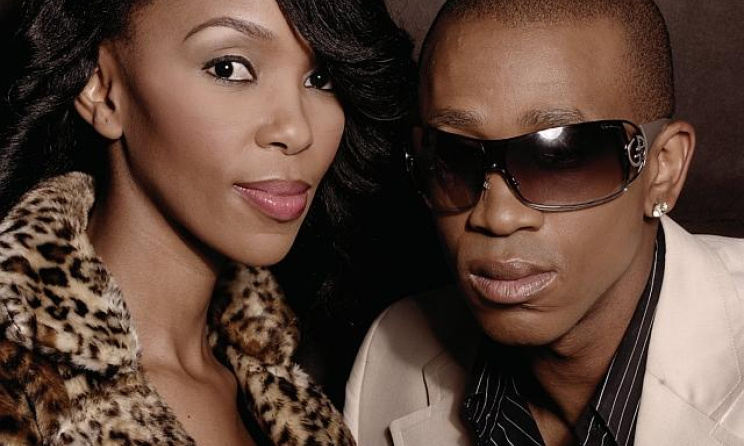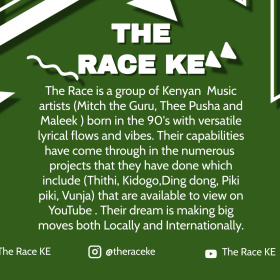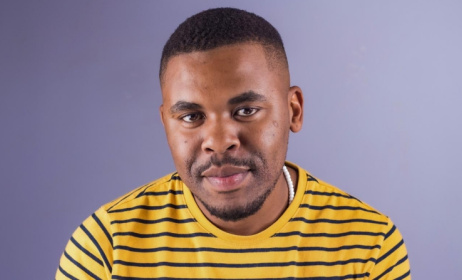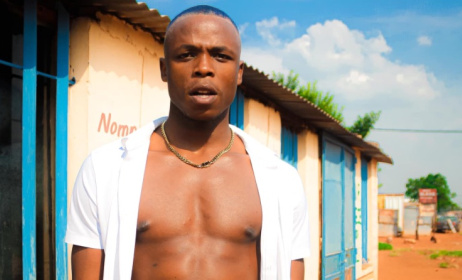Popular music in South Africa
By Rangoato Hlasane
An overview of South African popular music over the last three decades runs the risk of bias and unintended omissions. The reader is advised to look at this overview as an open-ended text that should be supported by further research, starting with the Music In Africa musicians’ directory. It looks at the four major popular genres of the last three decades and covers some of the key trends, artists and recordings.
 Mafikizolo
Mafikizolo
Bubblegum
The politically cryptic, electronically advanced music of the 1980s was labeled ‘bubblegum’, implying it was disposable and mass produced. Most of the creators of this new, American-influenced sound despised the term, preferring labels such as ‘disco’. Amidst the volatile politics of the decade, its defining star was the late Brenda Fassie. Brought to Johannesburg from Cape Town by Koloi Lebona, Brenda soon became part of Blondie Makhene’s touring group, with whom she recorded the smash hit, ‘Weekend Special’ as Brenda & The Big Dudes in 1983. The song signaled the start of the bubblegum era. Brenda released a string of hit albums, including Cool Spot, Touch Somebody, Higher and Higher and the landmark Black President.
Yvonne Chaka Chaka’s ‘Umqombothi’ (1988) traveled the continent and beyond. Dearly loved as the ‘Princess of Africa’, Chaka Chaka’s charming personalty and sweet voice delivered joyous party jams and melancholic freedom chants, best expressed in songs such as ‘I’m In Love With A DJ’ (1984) and ‘Caught Breaking The Law’ (1988). Sello ‘Chicco’ Twala will go down in history as the saviour of Brenda Fassie’s career in 1990’s until her death in 2004. He is also known for recent projects such as DJ Walker with Senyaka. However, Chicco’s most substantial contribution was in the 80s, as a solo artist as well a producer for popular and gospel artists such as Brenda, Yvonne, Chimora, Loading Zone, Dorothy Masuka, Benjamin Dube, Deborah Fraser and many others. Chicco’s many memorable songs include ‘We Miss You Manelo’ (1987), ‘Papa Stop The War’ (1990, with Mzwakhe Mbuli) and ‘Modjadji’ (1995). In 1998, he produced ‘Muvhango’ for Dr Philip Tabane, the theme song for the popular national soapie of the same name.
By the late 80s, some artists were forging new sounds, which ultimately gave rise in the 90s to kwaito. One of the artists who bridged the gap was Senyaka, hailed by some as the ‘Godfather of African rap’, for others as the first kwaito artist. Some of his hits include ‘Go Away’ (1989), ‘Ma-Gents’ (1993), ‘Mampara’ (1995), ‘Fong Kong’ (a 1998 duet with 80s star Kamazu as Hunger Boyz) and ‘Chesa Mpama’ (1999, as part of the DJ Walker project). His more recent material includes ‘Romeo O A Nkolota’ (2001) and ‘Sawa’ (2006). Another new school pioneer was the late Spokes H, who entered the scene in 1987 with ‘Tamati So’. Spokes H’s earnest, matter-of-fact lyrics on hits such as ‘Peace Magents’ (1997) off the Rafifi album gained him fans of all ages. He also produced for other artists, such as Cee Bee of ‘Home Boy’ (1994) fame.
Kwaito
Innovative musicians and producers who cut their teeth during the ‘bubblegum’ era were exposed to new international sounds such as house and hip-hop. These fresh influences, coupled with their mastery of electronic music production and the rapidly changing political climate, provided a fertile ground for new expression, culminating in the kwaito sound that provided the soundtrack to the 1990s.
At the time of Senyaka’s 1993 Ma-Gents, established stars like Brenda Fassie were sensing change in the air. The energy of the 80s was replaced by a new sound in town, evident in Senyaka’s offering, produced by the prolific Mandla ‘Spikiri’ Mofokeng. ‘Manyonyoba’ off Ma-Gents introduced the well-refined bending basslines that would define kwaito. It was later covered by Brothers of Peace (BOP) on their 1996 hit album, King of Kwaito (Uyagawula). The dynamic production duo BOP provided a platform for many successful kwaito artists. The duo’s debut album, Traffic Cop (1995), was released around the same time as another landmark album, Trompies’s Sigiya Ngengoma. When Trompies joined Kalawa Records to form what became Kalawa Jazmee Records, the label formed the producer supergroup, Dangerous Combination Crew. The collective produced hits for key kwaito acts like Boom Shaka, Bongo Maffin, Thebe, Alaska, Mafikizolo, Trompies and many others.
Boom Shaka’s 1993 first single, ‘Kwere Kwere’ took the country by storm, despite confusion over whether or not the song was promoting xenophobia. Featuring the late Lebo Mathosa, the group soon emerged as kwaito’s first supergroup, releasing a string of hit albums until their split in 1999, moving from label to label in search of creative freedom. Their hits include ‘Thobela’ (1994), ‘It’s About Time’ (1995), ‘Free’ (1997), ‘Qcwala’ (1997) and ‘Bambanani’ (1999). Boom Shaka shared their first stable, Kalawa Jazmee with Bongo Maffin, a briefly scandalous family sibling rivalry over two songs, ‘Hotel California’ and ‘Makeba’.
Another influential group in the Kalawa stable, Bongo Maffin first hit the scene in 1996 with a remake of the Eagles ‘Hotel California’, a song that had allegedly been reserved for Boom Shaka. It was followed by ‘Makeba’ (1996), which established the band – made up of Thandiswa Mazwai, Appleseed, Speedy and Stoan – as fully fledged stars. Bongo Maffin revisited the South African music archive as well as paying homage to roots reggae, dancehall, hip hop, soul and other music of the African diaspora. Some of the group’s hits include ‘Summertym’ (1996), ‘Thath’i Sghubu’ (1998), ‘Amadlozi’ (1998) and ‘Mari ye Phepha’ (2001). Some of Kalawa’s other artists during the 90s included Thebe (‘Philly’, ‘Sokoloko’, ‘Ungawa Kum’, ‘Lenyora’ and ‘Bula Boot’), the group Alaska (‘Hosherr’, and ‘Theresa’) and Trompies (‘Sigiya Ngengoma’, ‘Madibuseng’, ‘Magasman, ‘Fohloza’ and ‘Sweety Lavo’).
Arthur ‘Mix Maestro’ Mafokate is another important contributor to the kwaito scene, at one stage hailed as the ‘King of Kwaito’. One of his biggest contribution was the controversial ‘Kaffir’ (1995), followed by ‘Oyi Oyi’ (1997) and a string of hits accompanied by popular dance moves. Mafokate is the founder and producer at 999 Music, a platform for other tops musicians of the 90’s and early 2000’s, such as Abashante, Ishmael, Speedy, Nestum, Stitch, Zombo, Chiskop, Lira, New School, Makhendlas and others. A gifted dancer and choreographer, Arthur is credited with introducing new dance styles, including ‘Twalatza’, ‘Mnike’ and ‘Sika le cake’.
A rival for Arthur’s title, Mdu Masilela ultimately settled for ‘Godfather of Kwaito’. Mdu learned his skills in the 80s with the likes of Chicco Twala, Yvonne Chaka Chaka and Pat Shange. In 1989 he collaborated with Mandla Mofokeng to form MM Deluxe, releasing Where Were You? (1989). Mdu teamed up with Sbu (of ‘AmaLawyer’ and ‘Monate Fela’ fame), Pro and Magesh (of TKZee) to form Mashamplani, known for hits such as ‘Vokol as Niks’ and ‘Hey Kop’ in 1995. After royalty disagreements, the group disbanded and Mdu formed Mashamplani 2, one of the first groups on his Mdu Records. Other members of the stable included the big-selling Ma-Willies. Mdu’s biggest hits include ‘Tsiki Tsiki’ (1994), ‘YU4Me’ (1995), ‘Ipompe’ (1996), ‘Mazola’ (1997) and ‘AmaBankbook’ (1997).
Consisting of former Mdu collaborator Tokollo Tshabalala with Kabelo Mabalane and Zwai Bala, TKZee invaded the scene with their second EP, Palafala (1997). A new sound in musical and lyrical terms, TKZee followed this up with the wildly popular ‘Shibobo’ (1998), dedicated to the national soccer team and featuring striker Benni McCarthy. TKZee’s 1998 album Halloween is hailed today as one of kwaito’s landmark releases. It boasted monster hits like ‘Dlala Mapantsula’, ‘Magesh and ‘Mambotjie’, and ‘We Love This Place’. The collaborative 1999 album TKZee Family Album: Guz 2001, featuring the likes of Sbu, Gwyza, Loyiso Bala and the late Dr Mageu, was offered hits such as ‘Fella Kae’, ‘Izinja Zam’ and ‘Fiasco’.
The late 90s and early 2000s saw a string of solo efforts from members of key kwaito groups such as Kabelo (of TKZee, who released Everybody Watching and Rebel Without Cause), Mandoza (of Chiskop, who started with the banger 9II5 Zola South and later the massive hit ‘Nkalakatha’), Lebo Mathosa (of Boom Shaka, whose work earned her KORA and SAMA awards), Ishmael (of Skeem and Prophets of da City), as well as all members of Trompies, Abashante, Bongo Maffin and Mafikizolo.
The kwaito scene produced many other talented and influential artists and remains popular today. Also noteworthy acts include Doc Shebeleza, the late Brown Dash, Mapaputsi, Mzekezeke, Mzambiya, Msawawa, Mshoza, Spikiri, Joe Nina, Skeem, Kaybee, Skizo, Sharon Dee, Chakaroski, Oda Meesta and Zola.
Afro-Pop
The ever-evolving music of the region started showing signs of change in the late 90s. Just when kwaito seemed to be on the verge of an international breakthrough, Brenda Fassie’s 1998 Memeza unleashed a new form of dance music that came to be known as Afro-pop. Following Brenda’s landmark release, other groups developed the sound and found huge success. The trio Malaika, produced by kwaito veteran Guffy, who broke onto the scene in 2003 with a self-titled album that earned them SAMA awards for Most Popular Artist as well as Song of the Year, despite being released a year earlier. The group’s crossover hit ‘Destiny’ was solidified the Afro-pop sound as something distinct from kwaito and house. The group’s success was for a time only rivaled by another trio at Kalawa Jazmee, Mafikizolo.
Mafikizolo first emerged in the late 90s with a kwaito sound bearing a proudly ‘Sghubu’ stamp. Things changed in 2000, when the track ‘Lotto’ (referring to the then newly launched national lottery) from the album Loot put Mafikizolo on dancefloors from Johannesburg to New York (via Louie Vega’s remix of ‘Lotto’, re-titled ‘Loot’). The album also included a song called ‘Majika’, which established Mafikizolo as the darlings of Afro-pop. Mafikizolo’s hit albums Sibongile (2004), Van Toeka Af (2005) and Six Mabone (2006) enjoyed success across all age groups, thanks in part to the group’s musical and stylistic references to Sophiatown of the 1950s. After personal tragedies and solo careers, the group’s 2013 comeback Reunited saw them turn to house, with hits like ‘Khona’ and ‘Happiness’.
Out of Cape Town, meanwhile, came another addition to the Afro-pop scene. Freshlyground offered an innovative blend of influences and a diverse line-up of musicians from all over Southern Africa. The group’s 2004 album Nomvula included hits like ‘Doo Be Doo’ and sent them to prestigious festivals around the world, even earning them an MTV Europe Music Award for Best African Act in 2006. They received further international attention when they recorded ‘Waka Waka (This Time For Africa)’ with Colombian star Shakira for the 2010 Fifa World Cup in South Africa.
A host of other innovative artists who fall loosely into the Afro-pop genre have emerged in the past decade, most notably Simphiwe Dana (Zandisile) and former Bongo Maffin singer Thandiswa Mazwai (Zabalaza). Fusing soul and jazz with local influences, other similarly styled songbirds include Lira, Siphokazi and Zamajobe. The current darling of the Afro-pop genre is undoubtedly Zahara, whose 2011 album Loliwe sold over 100 000 copies in a matter of days. Zahara (real name Bulelwa Mkutukana) is signed to TS Records. Though at times dominated by females, male Afro-pop acts include the likes of Ntando, Robbie Malinga, MXO and Theo Kgosinkwe from Mafikizolo.
House
Popular youth radio station YFM opened the floodgates for kwaito and later house to conquer the mainstream. Long before that, however, DJs Christos, Vinny da Vinci, Oskido, Glen Lewis, Ganyani and Mbuso were at the forefront of forging a local house sound. Already by the late 80s and early 90s, ‘international’ house, particularly from Chicago, was dominating club culture. The early 90s also saw the release of the popular Mixmasters series on the Cool Spot label. By 1999, elements of house could be heard in much of kwaito, for example on Boom Shaka’s Words of Wisdom (1997) and Bongo Maffin’s The Concerto (1998). Other key releases include Hellrazor by Skizo and Bruce Sebitlo (1998) and DJs At Work by DJ’s Christos and Vinny (1998). House Afrika Records also helped build up the house scene, not only with their vinyl imports but more importantly by releasing numerous influential CD compilation series, including Fresh House Flava by DJ Fresh, Deep House Sounds by Vinny Da Vinci and Church Grooves by DJ Oskido.
By 2000, DJs were shifting from merely mixing international house tracks to producing their own work. Local house music came into its own, developing its own distinctive sound that draws on African influences. One popular release from this time was Revolution’s The Journey (2002). Kwaito artists continued to make the jump to house. Brothers of Peace’s Life’Iskorokoro (2004) and Zabalaza: The Struggle Remixes (2005) incorporated exciting live instrumentation, a new direction for house. Former Trompies member Mahoota began a successful career in house using the name DJ Vetkuk vs Mahoota.
Independent house labels flourished in the 2000s, such as Will of Steel (DJ Cleo), TS Records (DJ Sbu), Soul Candi (DJ Mbuso), Afrotainment (DJ Tira), Big Dawg Productions (DJ Fresh), Soulistic Music (Black Coffee) and many others.
DJ Black Coffee emerged in 2005 and soon helped cement South Africa as an international hub for house music. Black Coffee (aka Nkosinathi Maphumulo) is an innovative producer and performer – for example his 2013 album Africa Rising was performed live with a full orchestra. He also helped launch the careers of other top acts such as Culoe De Song and Zakes Bantwini. Other big names on the South African house scene include DJ Sbu, Tzozo, Professor, Euphonik, Dr Malinga, Heavy K, Fistaz, Big Nuz, DJ Tira, DJ Cndo, DJ Cleo, DJ Tokzen and Lulo Café. Groups merging house and Afro-pop by incorporating live vocals or instrumentation, such as Mi Casa, Liquideep and Black Motion, have enjoyed huge sales in recent years.
South Africans continue to enjoy a seemingly endless supply of quality house music. Kwaito and Afro-pop remain popular, as do other popular genres such as reggae and hip-hop. Pop music blasts out of every corner and crevice of the country, with numerous sub-genres emerging all the time – for example percussion-heavy Sghubu sa Pitori (the ‘Pretoria house’ sound of Soshanguve, Garankuwa and Atteridgeville), new and edgy Durban kwaito, hyperfast digital marimbas of Tsa Manyalo in Limpopo and the internationally reknowned sound dubbed ‘Shangaan electro’, and the rhythmic raps of Motswako - hip-hop performed in Setswana by the likes of Hip Hop Pantsula (HHP) and Khuli Chana, whose album Lost In Time earned him SAMAs not only for Best Rap Album but also Male Artist and Album of the Year in 2013.
Then there is a growing wave of more experimental artists who strive to defy genres and expectations - such as the Brother Moves On, BCUC (Black Consciousness Uhuru Continua), Blk Jks, Impande Core, The Soil, Dirty Paraffin, Spoek Mathambo, Toya de Lazy and Camagwini, who along with the more commercially successful house producers and DJs are laying the foundations for the future of South African popular music, and helping to put South African culture on the world map.
Further Reading:
Baffoe, K and Maphalla, S. 2013. ‘Sound Business: How an Empire was Built on House Music’. Destiny Man, pp. 34-40
Gqola, PD. 2013. A Renegade Called Simphiwe. MF Books Joburg.
Kaganof, A. 2006. ‘The Kwaito Story: Lebo Mathosa’ <http://kaganof.com/kagablog/2006/09/24/the-kwaito-story-lebo-mathosa-interviewed-by-aryan-kaganof/> (Accessed 9 December 2013)
Mojapelo, M. 2008. Beyond Memory: Recording the History, Moments and Memories of South African Music. African Minds.
Sosibo, K. 2013. ‘Kwaito 2.0: The House that Durban Built’. The Con <http://www.theconmag.co.za/2013/07/10/kwaito-2-0-the-house-that-durban-built> (Accessed 9 December 2013)





























Comments
Log in or register to post comments